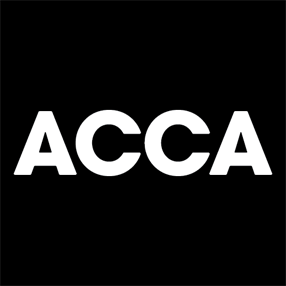Making Tax Digital – time to prepare!
In just over a year the first tranche of sole traders and landlords will be required by law to keep digital records to comply with the requirements of Making Tax Digital for Income Tax (MTD IT).
From April 2026, taxpayers with qualifying trading and property income of £50,000 or more on the 2024-25 tax return will be mandated to join MTD IT. The start date for incomes between £30,000 and £50,000 is April 2027. The Chancellor confirmed in the Spring Statement that MTD IT will be extended to those with income of £20,000 or more from April 2028.
This is a fundamental change to the way sole traders and landlords report their results to HMRC and will eventually apply to almost everyone who receives income from self-employment and/or property.
To comply with the requirements, mandated taxpayers must:
- Use approved software, apps or spreadsheets to record income and expenditure;
- Submit cumulative quarterly updates to HMRC by 7th August, 7th November, 7th February and 7th May each year; and
- Complete a final annual submission of taxable profit for the accounting period at the end of the year. This will replace the current self assessment tax return.
If you do not currently keep digital accounting records, do not worry, as we will be able to help you with the process. HMRC is not providing its own record-keeping software or platform. We will be able to recommend the right commercial software solutions that meet the MTD IT requirements for you.
An exemption from MTD IT will be available for taxpayers who are digitally excluded on practical or religious grounds. Some of the reporting rules for quarterly updates have been relaxed to simplify the process for certain categories of taxpayer.
Three-line accounts
Digital records can simply be tagged as either ‘income’ or ‘expense’ rather than specific categories, except for mortgage interest for landlords of residential properties.
Retailers
A single record of daily gross takings can be entered into the digital records, rather than each individual sale.
Jointly-let property
The individual owner can record a single total amount for each category of:
- Property income received during a quarter; and
- Property expenses incurred during the tax year.
We have been preparing to help our clients navigate the changes for some time, so contact us without delay to discuss what you need to do to get your business MTD-ready.
Side-hustle reporting threshold increased
The Government has announced plans to increase the threshold above which income from self-employment must be reported via self assessment.
Currently, if you earn over £1,000 from self-employment, or a so-called ‘side hustle’ such as babysitting or dog walking, you need to report this income to HMRC by filing a self assessment tax return, even if you do not owe any tax.
To save time and reduce the administrative burden for some 300,000 taxpayers, the Government intends to increase this threshold to earnings of £3,000 a year by the end of the current Parliament (April 2029 at the latest).
This is only a change to the reporting requirements – you will still need to let HMRC know about and pay any tax due on income between £1,000 and £3,000. This will be done via an alternative online service which the Government says will be simpler than self assessment.
The threshold is based on gross income, before any expenses are deducted. Taxpayers with income above £1,000 per year should continue to report this via self assessment until an implementation date for the change has been announced.
If you are earning between £1,000 and £3,000 per year from a ‘side hustle’ contact us to discuss what this change is likely to mean for you.
Salary vs dividends: NIC changes
With changes to employer’s National Insurance and the Employment Allowance, now is the time for businesses to review the most tax efficient mix of salary and dividends for directors.
From 6 April 2025 the secondary Class 1 National Insurance threshold reduces from £9,100 to £5,000. At the same time the rate of employer’s National Insurance Contributions (NIC) rises from 13.8% to 15%.
Cushioning the impact for some smaller employers the Employment Allowance (EA), previously up to £5,000 per year, more than doubles to a maximum of £10,500. The restriction that applies to the EA where employers have incurred a secondary Class 1 NIC liability of more than £100,000 in the tax year immediately prior to the year of the claim will be removed.
These two changes have the potential to significantly alter any existing calculations on the optimal remuneration structure for directors. In some cases it is more tax efficient to keep your salary as low as possible and take the rest as dividends due to the lower tax rates on dividends. However, following the increase to the EA, a director whose salary is eligible for the allowance and who has no other sources of income could, in certain circumstances, enjoy substantial tax savings by taking well over the personal allowance (£12,570) in salary.
The optimal mix will depend on various factors and differ from business to business. There may be other considerations such as ensuring that the amount paid to directors will be sufficient to cover any planned pension contributions. We can help you decide on the most tax efficient amounts of salary and dividends to pay yourself from your business.
HMRC to close online filing service
HMRC has announced that it will close the online service for filing company accounts and corporation tax returns on 31 March 2026.
Companies with an accounting period ending after 31 March 2025 will no longer be able to use HMRC’s free online service (unless they file before 1 April 2026) and will need to use commercial software to file their accounts and tax return instead.
The free online filing service is restricted to smaller, relatively simple companies with turnover not exceeding £632,000, subject to a number of exclusions. It allows the company to submit the annual corporation tax return to HMRC and send the accounts to Companies House at the same time.
Following its closure those companies, which could be a local residents’ association or a small incorporated charity, will need to use commercial software to comply with their online filing regulations. The software will need to allow the taxpayer to digitally file a corporation tax return (CT600) as well as the corporation tax computation and the company accounts for the same period in the specified ‘iXBRL’ format.
If you or someone you know currently uses the online filing service to submit the annual accounts and tax return to HMRC for a small company, such as a local amateur sports club, we can help you choose a suitable software product.
R&D relief for subcontractors
HMRC has updated its guidance to clarify the treatment of subcontracted research and development (R&D) expenditure under the SME scheme.
When R&D work undertaken by a subcontractor is subsidised, tax relief is not available to the subcontractor under the SME R&D scheme. Following two recent taxpayer wins at the First-tier Tribunal, HMRC has updated its guidance to clarify its definition of ‘subsidised’ for R&D purposes.
Generally, where R&D is contracted out to the subcontractor and reimbursed by the client company, the subcontractor cannot claim R&D relief. However the guidance has been updated to advise that the terms of the contract are not the only factor to consider.
Examples of other factors include:
- Whether the R&D is incidental to the supply of a product or service;
- The degree of autonomy over the R&D work;
- The level of financial risk involved; and
- Who retains the intellectual property.
Where R&D occurs as part of an overall contract, for example a builder who encounters an unexpected problem on a job might develop a new process to address that problem, the guidance confirms that expenditure is not considered to be subsidised unless there is a clear link between the amount paid by the customer and the R&D expenditure. This is a significant shift from HMRC’s previous view that expenditure was subsidised even where the costs were indirectly met by the client through project payments.
This change to the guidance means that if a subcontractor develops a new process during one project that has the potential to generate economic benefits for them on future projects, the subcontractor will likely be entitled to claim the R&D relief.
If you undertake R&D work on behalf of clients, or engage third parties to carry out such work on your behalf, we can help you decide whether you are eligible to claim R&D relief.
Self Assessment and student loan repayment
From April 2026 most benefits in kind (BIKs) will have to be processed through the payroll and included on monthly payslips, with a potential knock-on effect for student loan repayments.
The mandatory payrolling of BIKs will be implemented in phases, starting from April 2026.
The earnings threshold above which student and postgraduate loan repayments are due depends on the type of loan and when you started your course. Many people will never be required to repay their loan in full, or even at all, if their earnings do not exceed the threshold for the life of the loan.
To determine whether repayments are due for taxpayers within self assessment HMRC will look at the total income declared on the self assessment tax return (SATR). From 2024-25 a new box has been added to the SATR for taxpayers to enter payrolled BIKs that are subject to Class 1A NIC only separately to the total PAYE income. This is because student or postgraduate loan repayments are not due on those BIKs. If the total PAYE income figure on the SATR includes payrolled BIKs, the repayments calculated by the system will be too high.
If you have two or more separate employments and your earnings from each are below the repayment threshold, those earnings will not be added together for the purpose of calculating your student loan repayments if both are paid via PAYE. However, if you report your earnings using self assessment, your total PAYE income from all employments will be added together which could result in student loan repayments being due.
It may therefore be beneficial to stay out of the self assessment system where possible to avoid making unnecessary student loan repayments, particularly if you do not anticipate earning enough from each separate income source to be required to repay the loan in full before its expiry date.
Certain recent changes, including the increase in the income reporting threshold from £1,000 to £3,000 and the ability to pay the high-income child benefit charge via PAYE, will remove the need for many taxpayers to file self assessment. Contact us to discuss whether this could apply to you.
High-income child benefit charge via PAYE
 From August 2025 employed taxpayers will no longer be required to complete a self assessment tax return (SATR) to declare and pay the high-income child benefit charge (HICBC).
From August 2025 employed taxpayers will no longer be required to complete a self assessment tax return (SATR) to declare and pay the high-income child benefit charge (HICBC).
The HICBC is a tax charge paid by the higher earning parent which claws back up to 100% of the child benefit claimed by either parent. For the tax year 2024-25 the HICBC is payable at 1% for every £200 of adjusted net income between £60,000 and £80,000 when the charge reaches 100% of the child benefit received.
Currently, even where the higher earner receives all of their income from employment, they need to complete a SATR in order to declare and pay the HICBC. The Government has confirmed that it will no longer be necessary to complete a SATR purely for the purposes of the HICBC. Those individuals with no other income outside their PAYE earnings will instead need to use a new online service to report their family’s child benefit payments and opt to have the HICBC collected from their payslip.
Taxpayers with income from other sources such as property or self-employment income will still be required to file a SATR.
IR35: small company exemption
Changes to the company size thresholds from April 2025 will also apply for the purposes of the off-payroll working (OPW) rules.
The primary aim of the changes to the company size thresholds was to simplify regulatory requirements and alleviate the administrative burden for smaller businesses. HMRC has now confirmed that the new thresholds will also apply when deciding whether the OPW rules apply where companies engage workers via an intermediary.
For micro and small companies, the onus is on the contractor to determine its own status in relation to IR35. When a company breaches the threshold for medium sized entities, it is required to carry out the assessment for each contractor under the OPW rules.
To qualify as small from 6 April 2025 a company will need to satisfy two or more of the following criteria:
- Turnover not more than £15m (currently £10.2m)
- Balance sheet total not more than £7.5m (currently £5.1m)
- No more than 50 employees (currently 50)
Following the change many companies that are currently classed as medium will become small and will no longer be required to perform OPW assessments. If you are a contractor and provide services to medium-sized companies, you may be required to assess your own employment status if your client falls into the small company category when they thresholds change. We can help you with this.
It is currently unclear from the legislation when exactly the changes will take effect, although it is unlikely that they will be operational before April 2026. We are seeking clarification from HMRC on this and will update affected clients in due course.



 From August 2025 employed taxpayers will no longer be required to complete a self assessment tax return (SATR) to declare and pay the high-income child benefit charge (HICBC).
From August 2025 employed taxpayers will no longer be required to complete a self assessment tax return (SATR) to declare and pay the high-income child benefit charge (HICBC).










